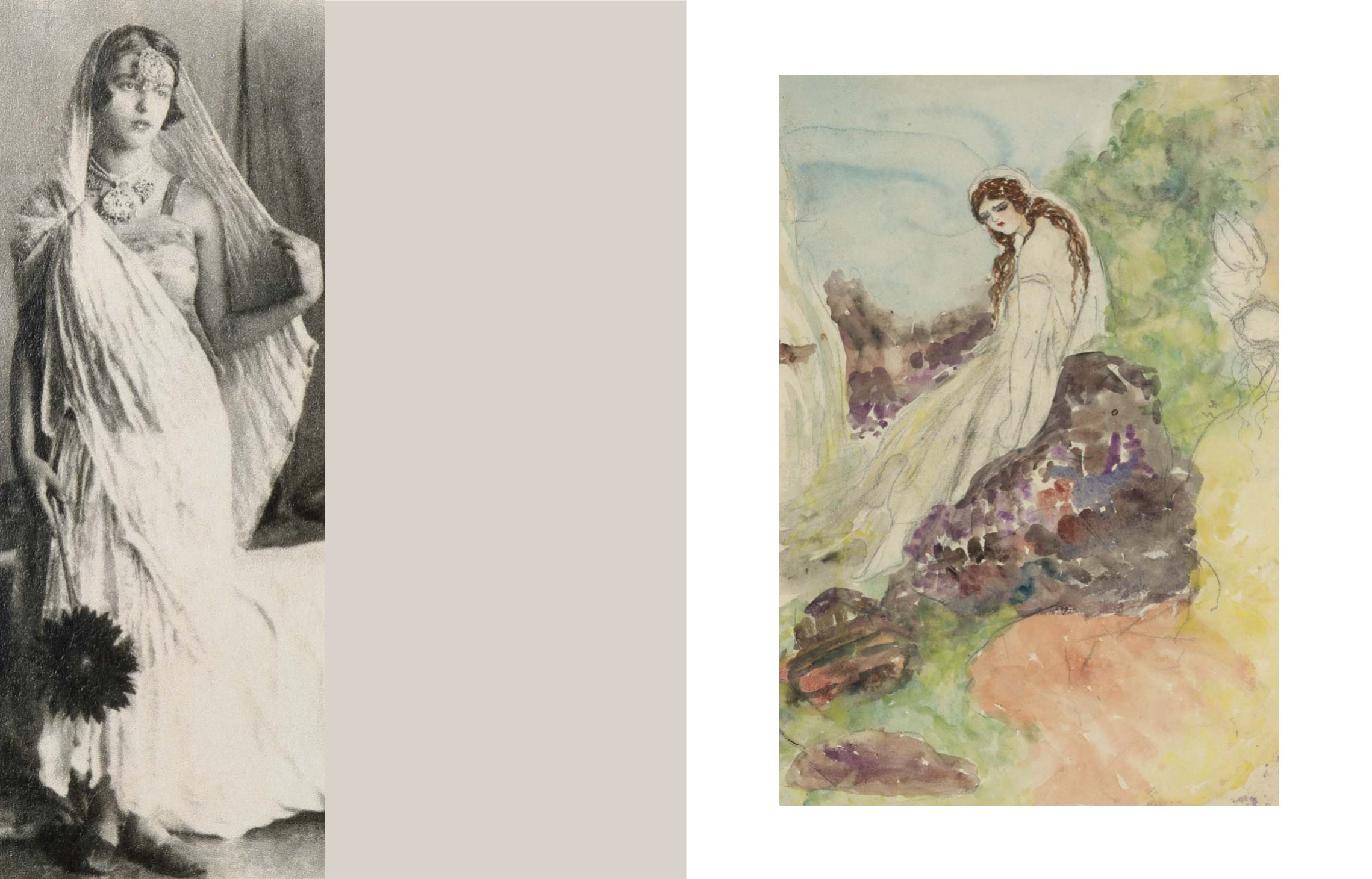

94
95
48
AMRITA SHER‒GIL
(1913 ‒ 1941)
Untitled
Watercolour and pencil on paper
13.25 x 9 in (33.8 x 23 cm)
Rs 45,00,000 ‒ 65,00,000
$ 71,430 ‒ 103,175
NON‒EXPORTABLE NATIONAL ART TREASURE
Provenance
Acquired directly from the artist's family
Amrita Sher‒Gil displayed a prodigious talent for art
from early childhood, obsessively filling sketchbooks
with drawings and watercolours. Crayon illustrations of
Hungarian fairytales duringher school years inDunaharaszti,
Hungary, led to paintings of female figures depicted “in
an emotionally charged and sensuous manner,” (Vivan
Sundaram ed.,
Amrita Sher‒Gil: A Self‒Portrait in Letters &
Writings
,
Volume 1
, New Delhi: Tulika Books, 2010, p. xl) as
Sher‒Gil grew older and her sensibilities matured.
The Sher‒Gil family moved to Simla in the 1920s, where
she often painted watercolours based on her impressions
of female characters from films and novels, or occasionally
from personal observations. Around 1924, she won her
first prize for art, a cash award of Rs. 50, for painting her
first responses to cinema. The present lot, with its similarity
to other Sher‒Gil watercolours of this time, is most likely
from this period. Sher‒Gil's diaries are replete with letters,
observations, and her own stories and poems. One such
entry which appears in
Amrita Sher‒Gil: A Self‒Portrait in
Letters & Writings
, describes a scene that closely resembles
the one in the present lot:
“
Azelda
I saw her by a clear brook dipping her feet into its transparent
waters and running her white fingers through it. Her lips like
pink rosebuds, her delicate features as if carved out of the
whitest alabaster, her huge dark liquid eyes with her long
curling eyelashes had the expression of sweet innocence, her
black hair parted into two luxuriant thick braids and plaited
with white seed pearls, and a little pearl pendant with three
sparkling diamonds hanging from her forehead like great
pure teardrops. She was clothed only in flimsy pink silk whose
silky folds barely concealed her white limbs and her slender
arms were bare…
” (Sundaram, p. 30)
Amrita Sher‒Gil, 1926‒1928
© Vivan Sundaram


















